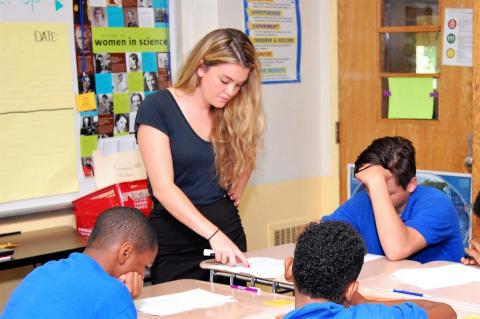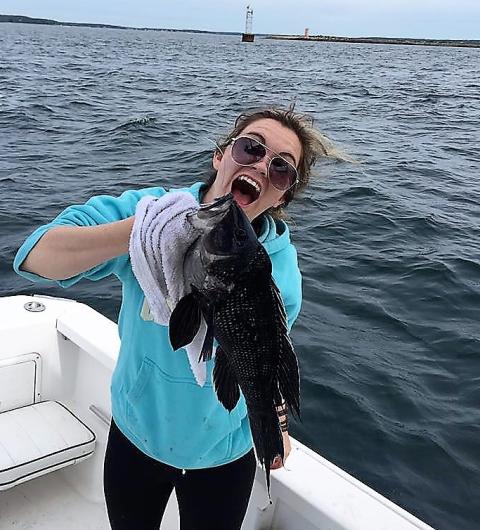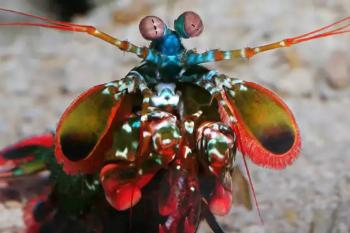
Brittany Basse, Middle School Teacher, Baychester Middle School, Bronx, NYC
Brittany Basse, teaches eighth grade Science and Humanities at Baychester Middle School in the Bronx, New York City. The layers of challenges echo in her title alone – yet her candor, direct approach, honesty, and an unpolished sense of humor make it clear why she does not just survive but thrives in a teaching environment where turnover rates and morale are often in stark contrast.
Brittany just marked her 10th year living in New York City. She wasn’t always set on a career in education. After reflecting where she was heading, a few years back, Brittany realized her whole life led her here. From growing up babysitting after school, to nannying over summers, and in college where she worked with After-School All-Stars in Queens, NYC, (a program that engages inner city elementary and middle school students in after school activities), she noticed that she loved being around kids. She decided to leave her job in PR, enrolled in grad school for Special Education, and never looked back.
Brittany works with children who are navigating any variety of abilities: from emotionally distressed behavioral problems to learning disabilities such as dyslexia, or others encompassing physical disabilities. “My job as a Students With Disabilities (SWD) teacher is to convey the subject matter to all levels, identify signs of learning disabilities, and determine the best methods to reach each student at their level.”
“I have lived in the Bronx for some time, and my fiancé grew up here. The Bronx is an underserved area,” she explains, “I wanted to go where I can be of most use. Many of my students’ parents are immigrants who don’t always understand the systems at school, particularly IEP’s (Individualized Education Plans); they don’t know the right questions to ask and how to provide adequate services for their children’s unique needs. The kids and their families need this support and it’s where I can be of most value.”
Express Yourself: Where Teaching to the Individual is a Game Changer
Brittany continued to explain how she makes her science classes more accessible, “The key to making science fun for my kids is meeting them where they are and recognizing their method of learning. For example, many of my students cannot express themselves in writing, so together we find ways to show me what they’ve learned – speaking, pictures, objects. The biggest hurdle is the lack of resources on top of limited capabilities. Shape of Life has been enormously helpful. Certainly, the fact that it’s free—but, more, it’s extremely good content that includes short videos, readings, lesson plans and illustrations. With a lack of resources, most kids can make do with pictures to learn, however these kinds of units and topics are especially challenging for SWD. With Shape of Life, I can show them a video, include an interactive lesson plan and then my students choose ways to share their experience with me.”
“Most of my kids, aged 14-16, have never seen the ocean. That’s where Shape of Life has played an immeasurable role. I can bring the ocean and aquatic life to them in pictures and videos rather than just text books.”
“The Scientist videos are especially relevant at the beginning of the school year when I can create a vision of a possible future for my kids. They allow me to showcase the different types of careers and fields of science in ways that cater to my kids. Scientific careers don’t always seem “accessible”, given their circumstances. It’s wonderful to see the faces of my students when they see how through hard-work they can also achieve success in a career in science.”
When ‘Kids’ Become ‘My Kids’
“I like their attitudes, the pride they have in where they’re from, even though they live in a tough area. They’re scrappy and, have real grit – not the kind taught in the classroom. They overcome challenges and real-life problems that they share with me after school-- problems most adults I know couldn’t handle. They make me a more sympathetic person and definitely teach me creative problem-solving skills. Everything covered in the news – from immigration reform to substance abuse and crime – those are my kids’ lives every day.”
“Because of them, I never take a well-balanced meal, access to books, technology, or the internet at my finger-tips for granted." 
When the Student Becomes the Teacher
When asked what her favorite moment in teaching is, Brittany struggled to stick to one – “Well, the gratitude of my students keeps me going. In June, I received a card from a student at the end of the year thanking me for never giving up on her even when other teachers did, and for helping her to understand who she was – a young African American woman in the Bronx. That was a pretty good day.”, beamed Brittany.
“And of course, without fail, teaching the reproductive system is my all-time favorite – struggling through the kids and their discomfort, making it funny and real and not awkward for them to learn about – I have to be honest, that doesn’t get old.” We knew right away, the ability to keep it ‘light’ – in heavy moments-- is what makes Brittany a perfect fit for what she does.’
Thanks for making what may sometimes seem impossible, possible for so many kids, Brittany.

Take a look at another insightful article about the special needs of SWD.
















